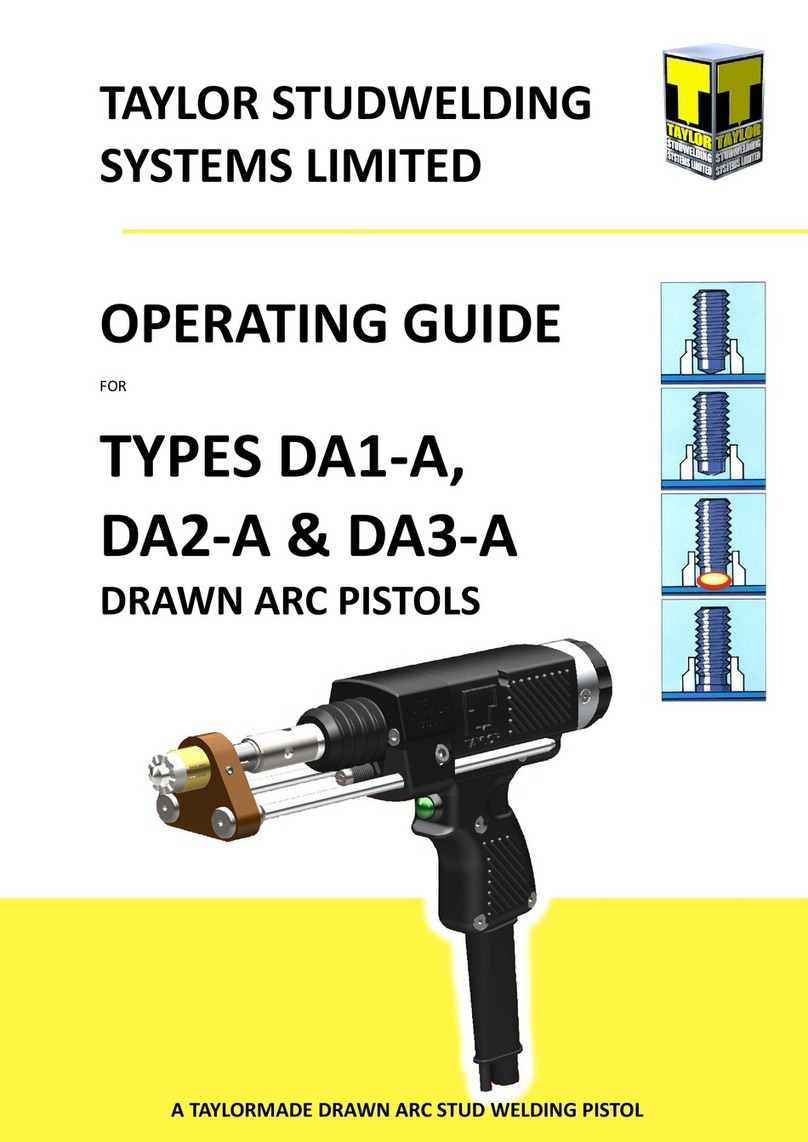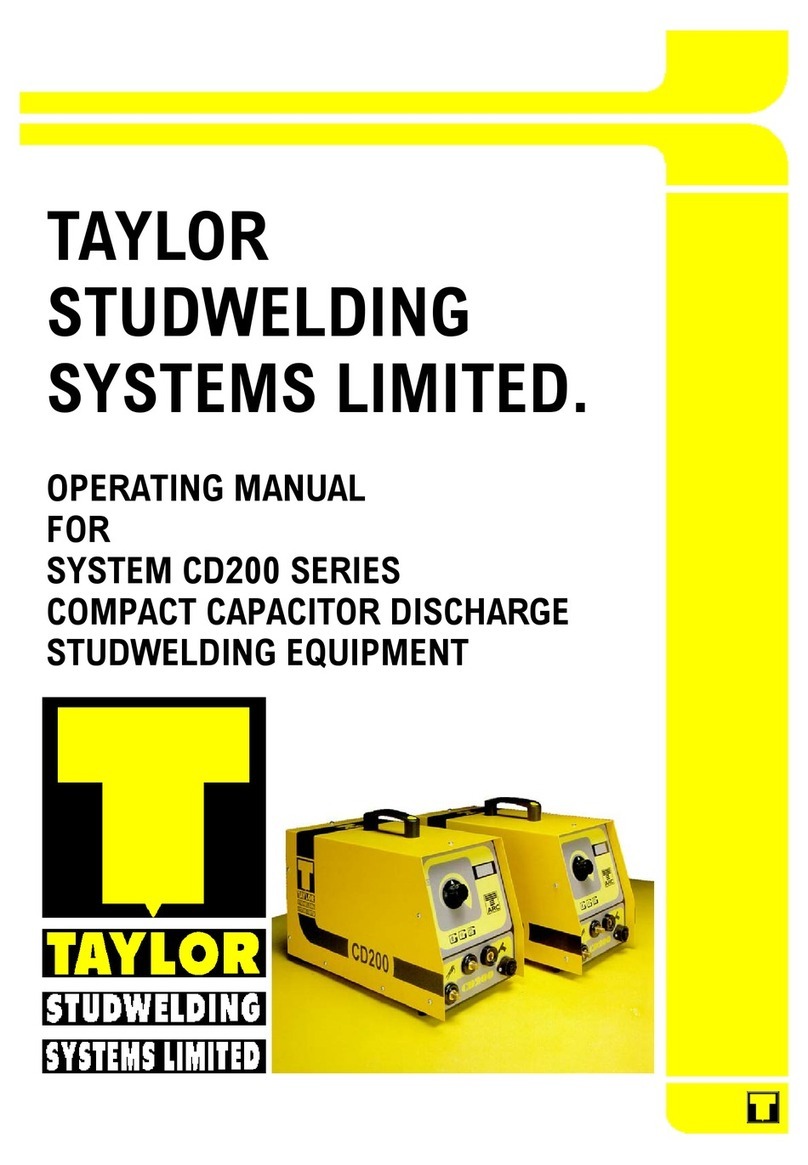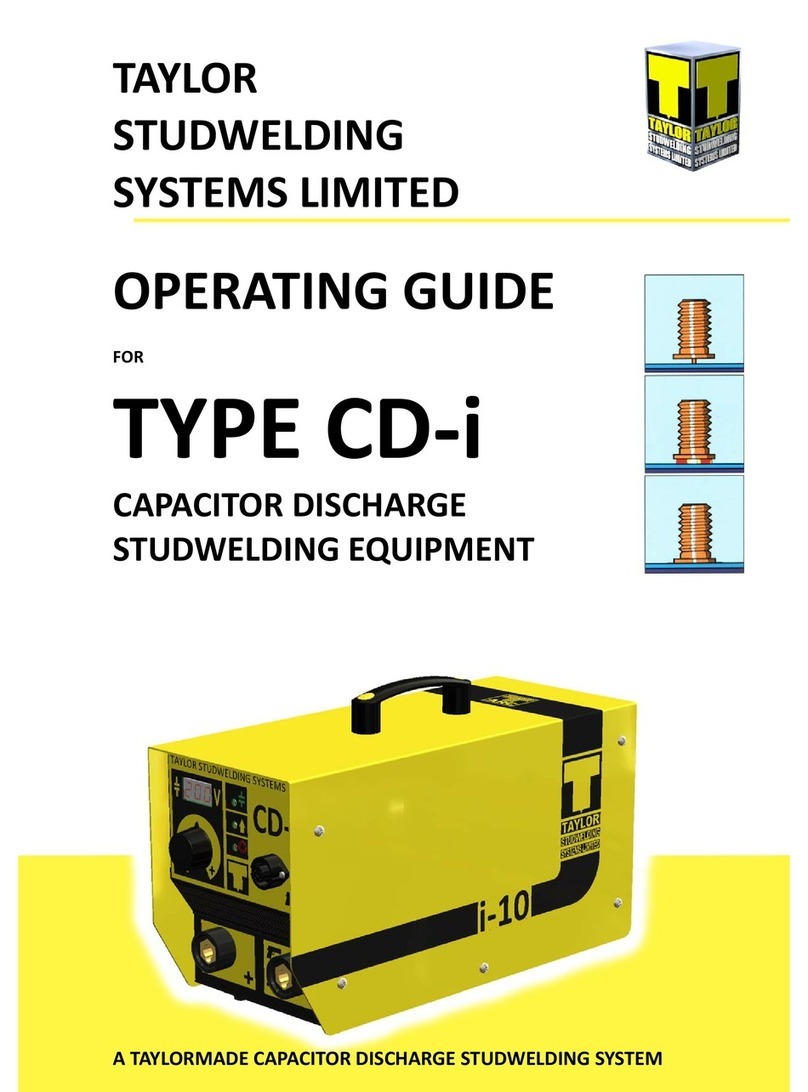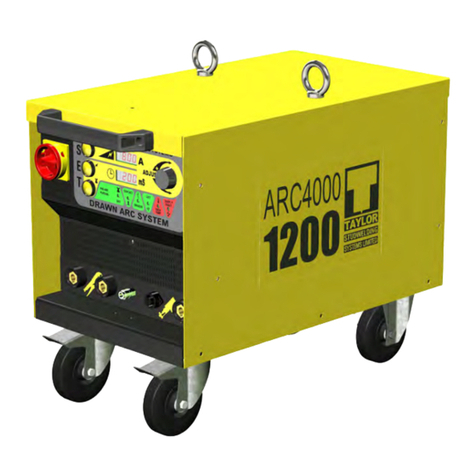
V-21A
5
INTRODUCTION
INTRODUCTION
The complete range of Taylor Studwelding Systems Capacitor Discharge units are
compact, portable Stud Welding equipment. The units are specically designed to enable a
small diameter range of ferrous and non-ferrous weld studs to be welded to light gauge,
self-nish or pre-coated materials, in most cases with lile or no reverse marking.
The equipment consists of a control unit, a welding pistol and the necessary
interconnecng cables and accessories (see page 6 for the equipment schedule).
THE PROCESS
Capacitor Discharge stud welding is a form of welding in which the energy required
for the welding process is derived from a bank of charged capacitors. This stored energy is
discharged across the gap between the two surfaces to be welded as they are propelled
towards each other. The arc produced heats the two surfaces, melng a thin lm of metal
on each surface and the propelling force closes the gap between the two faces, thus
forming a weld.
In contact welding the stud to be welded is forced by spring pressure against the
work piece. At this point the arc gap between the two components is maintained by a small
pip on the welding face of the stud. On iniaon of the high current pulse from the
capacitors, this pip vaporises and an arc is drawn between the work piece and the stud. The
heat from this arc melts the base of the stud and the area of the work piece directly
beneath the stud, whilst the spring pressure from the pistol accelerates the stud towards
the work piece. Within 3-4 milliseconds the stud hits the work piece and the arc is
exnguished. The kinec energy contained in the moving stud and the remaining spring
pressure, forge the molten parts together to form a weld.
Li Gap welding uses a soer spring than contact. This is especially helpful when
welding soer materials e.g. Aluminium as the strong spring in a contact pistol can damage
the pip on the stud aer more than relavely brief contact. Li Gap also uses a solenoid coil
in the pistol. When the trigger is pressed the coil is energised momentarily, liing the stud
away from the work piece to a pre-determined height and releasing, allowing the stud to
accelerate back towards the work piece. The high current pulse iniates on contact and the
weld takes as in contact welding but at a much faster rate (1-2 milliseconds) because of the
acceleraon from the li.































